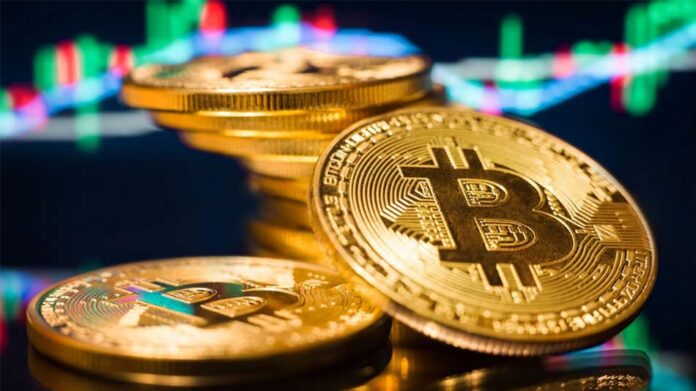Table of Contents
It is hard to find someone who hasn’t heard of Bitcoin or considered investing in it to profit from the buzz created around it. It became one of the hottest topics in the financial sector, and its dizzying rise has pushed central banks and governments to find ways to regulate it in order to maximize user reliability and safety and prevent fraud and criminal acts behind other interests.
While last year was harsh for the leading digital coin and its contenders, the outlook for the asset is relatively bullish these days, which is why the number of investors looking to buy Bitcoin is rising. It is currently edging closer to $30,000 for the time being, having already broken this psychological level this month. Analysts firmly believe the winter is over for crypto and that the next year will bring more money-making opportunities as it goes through a transformative event, namely the halving.
Educated About Cryptocurrency
People become more and more educated about cryptocurrency as mass adoption expands. Yet, how many know the factor that makes Bitcoin so appealing? Some cryptocurrencies can be unlimitedly created, such as Ethereum, so they will never reach their supply limit. However, this isn’t a general rule, as many other digital assets are created with different reasoning in mind. Bitcoin is the perfect example in this regard. It has a finite number of 21 million coins, and once that limit is reached, no more coins will be produced.
At the moment, there are over 19 million bitcoins in circulation. At the same time, around 1.59 million assets are waiting to be mined, although you shouldn’t anticipate them reaching this limit anytime soon. The mining process continues, and approximately 900 bitcoins are generated daily, raising several intriguing questions in the cryptocurrency community and beyond. What is the purpose of Bitcoin’s supply limit, and what will happen after the last block is added to the blockchain? These are often pressing questions that crypto enthusiasts seek answers to.
Why is Bitcoin’s supply cap pegged at 21 million?
Almost 19.5 million bitcoins have been mined, leaving 1.5 million to be generated over the next century. The figures change daily, as miners introduce around 900 bitcoins to the network every 24 hours. Experts believe the estimated date will be in 2140.
Satoshi Nakamoto, Bitcoin’s pseudonymous developer, established that blocks would have a finite supply of 21 million in order to remove the risk of inflation. This is just how the law of supply and demand works. An asset that sees increased supply loses value.
Bitcoin’s primary intention was to serve as a store of value and transactional tool, and just like in the case of paper money, creating more units drives inflation, possibly leading to substantial price fluctuations.
As such, the founder created a 21 million limit to manage the supply and minimize Bitcoin price swings. How could it be done? Introducing bitcoins gradually instead of putting all 21 million bitcoins out instantly, which would strain the market.
However, the exact 21 million figure won’t be reached. Hitting the limit of 21 million Bitcoins is relatively impossible, so the figure will hover around that number. This happens because Bitcoin’s supply can never be determined in set-in-tone terms.
What to expect after the introduction of the last Bitcoin?
The cryptocurrency landscape is surrounded by uncertainty, with prices falling and climbing abruptly and investor sentiment changing rapidly. The future position of Bitcoin is also unpredictable once its supply limit is reached. However, though there’s a long way to go until Bitcoin runs out of supply, several scenarios will likely occur around that time.
Increased demand
As Bitcoin inches towards the last block on the blockchain, scarcity rises. Suppose the crypto market pioneer keeps performing well and sees significant future requests, then its absence will lead to a growth in the coin’s value. As a general rule, Bitcoin’s prices grow when supply declines, boosting its purchasing power if demand increases.
Transaction fees
Miners receive freshly minted Bitcoins as rewards after successfully generating “blocks” of verified transactions sent to the blockchain. However, they will no longer be provided to miners after the 21 million cap is achieved, meaning that miners can only gain income through transactions.
Network stability
Miners have a crucial role in safeguarding the Bitcoin network. Providing computational power to it in order to gain Bitcoin rewards. After the last Bitcoin is released, Bitcoin’s network. Will still depend on them to check transactions and secure it from double-spending threats. As such, network participants must ensure that miners are incentivized to keep securing the network by dedicating processing power.
Fee-based ecosystem
Bitcoin’s ecosystem will stop being reward-driven and move towards one completely reliant on transaction fees, probably encouraging more blockchain optimization to maintain a high level of security. With advances like layer-2 solutions, more affordable. And faster transactions are expected, decreasing the strain on the base layer.
What will Bitcoin miners do after the event?
Besides how the price will evolve, another aspect worthy of consideration is how the phenomenon will impact Bitcoin miners. Without a doubt, the end of the mining era will have significant implications for them, as they won’t be able to use their expensive CPUs and GPUs anymore to create blocks. Mining incentives will no longer exist, potentially leaving miners with transactions. And processing fees as the primary source of Bitcoin-related income instead of a mix of transaction fees and block rewards. Miners will gain them from users who want their transactions checked and confirmed faster.
Bitcoin’s halving is the future milestone on the network.
Bitcoin’s halving refers to cutting mining rewards in half for miners. The policy exists in Bitcoin’s mining algorithm, which aims to combat inflation through secured scarcity. This is a widely-expected event by investors and members of the Bitcoin community. Alike, history shows that past reward halves have proven positive for the asset’s price performance. Bitcoin tends to behave well before the depletion of the process, entering a bullish trend.















